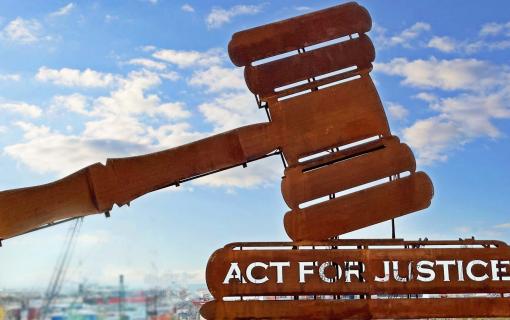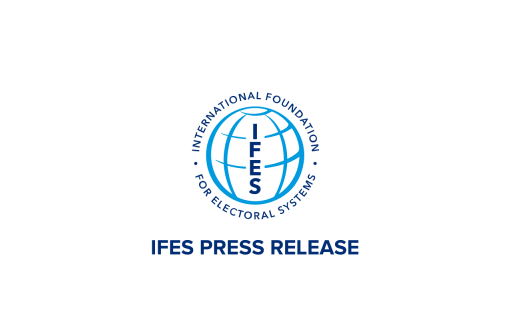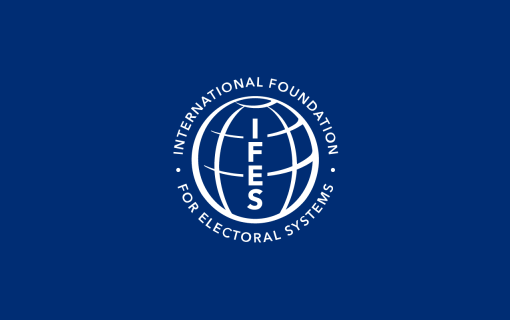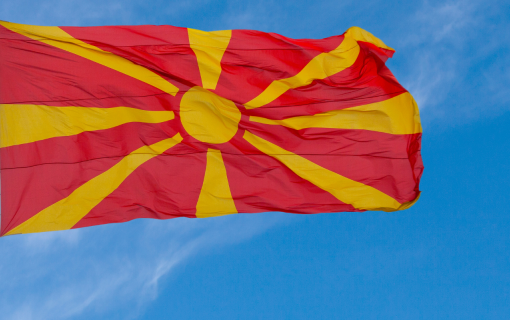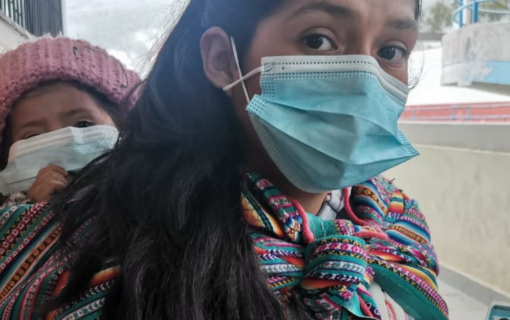Election Observation El Salvador, March 20 - April 24, 1994
EXECUTIVE SUMMARY
The International Foundation for Electoral Systems (IFES) organized two electoral observation missions to El Salvador for the March 20, 1994, general elections and the April 24, 1994, second round presidential run-off election. El Salvador has celebrated democratic elections in wartime conditions with international observation since 1982. In 1989, the country realized the first transfer of power from one elected civilian to another. Twelve years of civil war ended in January 1992 with the signing of the Chapultepec Peace Accords between the Government of El Salvador and the Frente Farabundo Marti para La Liberacion NacionaL (FMLN). The 1994 elections were the first elections held in peacetime conditions and with the full participation of parties across the political spectrum, making them the most representative elections in El Salvador's history.
The IFES electoral observation missions to El Salvador were financed by the United States Agency for International Development (USAID). However, IFES did not serve as an official United States government mission. USAID/San Salvador financed three United States based non-governmental organizations: IFES, Freedom House, and the International Republican Institute (IRI). Each organization fielded a series of pre-electoral and two observation missions. From the outset, the three groups carefully coordinated activities to provide full coverage of the electoral process. IFES focused on technical issues, Freedom House focused on human rights issues, and IRI focused on the political process.
The two IFES observer delegations (24 observers for the first round and 6 observers for the second round) included recognized experts in Latin American politics and election specialists from Latin America, North America and Europe. The observation missions were led by Ambassador Jack Hood Vaughn, former United States Peace Corps Director, former Ambassador to Panama and Colombia and former Assistant Secretary of State; and Mr. Richard Soudriette, Director of IFES.
The delegation for the general elections arrived in El Salvador on March 17, 1994, for two and one-half days of extensive briefings on Salvadoran politics and the electoral process. The terms of reference of the delegation were to observe whether the voting and counting processes were conducted in a free and fair fashion and in correspondence with the electoral code. Delegation members departed El Salvador on March 22, 1994. IFES maintained a staff presence in El Salvador through March 25, 1994.
The 24 observers to the first-round elections observed polling sites in rural and urban areas of II of El Salvador's 14 departments. The observation sites were chosen to cover the greatest number of voting centers, to cover voting centers in areas which had been identified to IFES as potentially problematic, and to cover voting centers in areas of the country which had been most affected by the civil war, known as the "former conflictive zones." These included the departments of Chalatenango, Cabanas, Usulután, San Vicente, Morazán and La Union. IFES also sent observers to the departments of Sonsonate, Santa Ana, La Paz, and the capital San Salvador and its environs.
The IFES delegation found that the El Salvador voting process was conducted in an orderly, peaceful and transparent fashion which permitted the popular will of the Salvadoran people to be expressed. No acts of manipulation or violence, which would call into question the results of the elections, were observed by the IFES delegation. IFES observed voters and electoral officials from all parties working together in a cooperative and friendly fashion. The new national police (Policia Nacional Civil) conducted itself in a professional, discrete manner at the voting centers observed by IFES. However, during the first-round general elections, the IFES delegation did observe significant defects in the logistical organization of the elections along with problems with the electoral registry.
There was an over-concentration of voting stations (known as "JRVs" or "mesas" in El Salvador) at few voting centers (centros de votacion), making it very difficult for citizens to locate (and access) their JRV and names on the electoral registry. The problem was particularly serious in the urban areas, especially San Salvador, La Uni6n, and San Miguel. For example, there were 280 voting stations in one place at the international fairground in San Salvador. There was also insufficient public transportation available, making it difficult for citizens to reach voting centers, which were frequently located far from their residences.
IFES delegates also observed citizens with voting documents (carnet electorales) who were unable to vote because their names were not on the electoral registry. The United Nations Electoral Observation Mission (ONUSAL) noted the same problem, citing 25,000 citizens with carnets who did not find their names on the electoral list at 3,000 voting centers. In general, IFES observed that many citizens, especially uneducated ones, had difficulties understanding the electoral registry and electoral process. While many party observers assisted voters in locating their names on the electoral registry, more orientation and assistance for voters was needed. IFES also observed some citizens who were unable to vote because others had used their names to vote earlier. ONUSAL determined that a small number of such cases existed.
IFES also observed that JRV officials, while responsible and cooperative in many instances, lacked sufficient training. The Tribunal was late in starting the training seminars even though technical assistance from the international community was offered early in the process. The parties contributed to the delay in training by failing to submit their lists of JRV officials on time. According to the president of the Tribunal, out of 16,000 JRV officials trained, only 5,000 ended up working on election day. The training manual (instructivo) was very good, but it also arrived shortly before election day.
As a result of the problems listed above and the many citizens who chose not to exercise suffrage, participation in the first-round election was 1.5 million, or 55 percent of the 2.7 million voters on the electoral registry. An accurate accounting of participation levels is impossible because the electoral registry of 2.7 million includes an uncertain number of names of defunct citizens, citizens living abroad, and possible double registries. IFES notes that the lack of an solid electoral registry in El Salvador conditioned confidence in the electoral process.
None of the presidential candidates received a majority in the first round, with ARENA candidate Calderon Sol polling 49.03 percent, La Coalician candidate Ruben Zamora polling 24.90 percent, and the Christian Democrat candidate Feliz Chavez Mena polling 16.36 percent. Consequently, a run-off election between the two top contenders was held on April 24, 1994. Calderon Sol received 813,966 votes or 68.32 percent of the vote and Ruben Zamora received 377,391 or 31.68 percent. 1.25 million voters participated in the second-round election.
The IFES observation mission to the second-round election consisted of 6 members, all observers of the first round elections. IFES maintained a presence in EI Salvador April 20-27, 1994. IFES deployed three teams to San Salvador and environs (2 members), Cuscathin and Chalatenango (2 members), and La Paz and San Vicente (2 members). IFES also coordinated with two other US AID-financed missions to provide coverage to most of the eastern part of EI Salvador.
Improvements in the administration of the second-round election were adopted by the Supreme Electoral Tribunal, which made for a more organized and efficient process. The Tribunal decentralized JRVs in some voting centers and added 35 new voting centers, which was especially helpful in San Salvador. In some voting centers, the Tribunal posted maps to direct voters towards their respective NRs. The electoral registry was usually posted in a more visible and accessible place for voters. The Tribunal also agreed to permit the two contending parties to field advisers (orientadores). These party advisers, usually young people, checked the registry and directed voters to their correct JRVs. This system greatly improved the fluidity and efficiency of the voting process.
For the second-round election, the JRV officials and two party observers (vigilantes) were designated by the FMLN and ARENA to provide coverage in an equal fashion. In most cases the two parties cooperated well together. Voting in general was much more efficient and quicker as there was only one ballot and one election. The United Nations Development Programme (UNDP) also donated some $400,000 to the FMLN and ARENA for voter transportation.
The limitations presented by the electoral registry remained. The Electoral Code was revised to permit carnes electorales to be issued between the first and second round and an additional 15,000 voters were incorporated to the registry. During the second-round election, the IFES delegation again observed some citizens with carnets whose names were not on the electoral list. The Tribunal plan that each JRV keep a list of the voters who were unable to vote because of problems with the electoral registry was generally not implemented.
The results of the presidential race were widely accepted. However, the FMLN and Movimiento de Unidad challenged the results of some legislative and municipal races to no avail. President elect Calder6n Sol and Ruben Zamora struck a verbal agreement to reform the electoral code and process in time for the 1996 legislative elections. All the political parties support the reforms, which include: I) The introduction of a new unitary national identity and voting document (Sistema de Idenlijicacion Ciudadano y Electoral- S.I. C.E.); 2) A more professional and less politicized Tribunal Supremo Electoral (TSE.); 3) Proportional representation at the municipal level; and 4) Residential voting (i.e. disbursement of voting centers closer to voter's residence.)
Read the Full Report.




